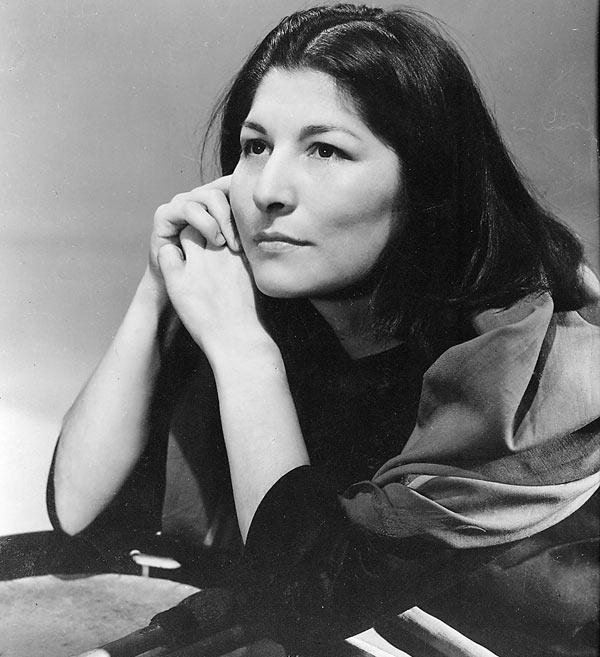I’m not quick to apply the word “intimate” followed by “portrait” to anything outside of the Lifetime series by the same name, but this description accurately characterizes Rodrigo H. Vila’s documentary Mercedes Sosa: The Voice of Latin America. The film is a retrospective of the Argentinian alto whose career spanned 60 years and encompassed the tumult of 20th century political and cultural shifts in Latin America.
Sosa was born in the northwestern Argentine province of Tucumán, where she and siblings went to bed hungry more often than not. At the age of 15 she won a singing competition organized by a local radio station and was given a contract to perform for two months, much to the chagrin of her parents, who at the time did not think highly of folk music. She started her career in Tucumán and performed under the name Gladys Osorio. In 1957, she married Manuel Óscar Matus and together with Armando Tejada Gomez and Jose Segovia, they created the manifesto of the “Nuevo Cancionero”: a people’s movement anchored in traditional Argentinian folk music and poetry. Sosa began performing and recording music under her given name, and soon drew much attention for her powerful voice and fervent commitment to championing the rights of the poor and oppressed in Latin America. As she says in one of the many interviews incorporated in the film, “The life of people in America is a suffering people. They are a very poor people. They don’t deserve this poverty. We’ve been robbed of so much, really.” In the early 1970s, she recorded concept albums that celebrated the art and music of Latin American poets and composers, like the Chilean poet and folk musician Violeta Parra. Parra’s “Gracias a la Vida” would become one of Sosa’s signature songs. Even translated into English and flat on the page, the lyrics are beautiful, and in Sosa’s voice truly transcendent:
Thanks to life, which has given me so much.
It gave me two stars, which when I open them,
Perfectly distinguish black from white
And in the tall sky its starry backdrop,
And within the multitudes the one that I love.
By 1975 Sosa herself would be robbed of the freedom to perform in her home province, and many other sites in Argentina, due to increasing presence of a military dictatorship, which would install Jorge Rafael Videla in 1976. Targeted as a communist, she started receiving death threats and was forced to leave Argentina after being arrested on stage in 1979. In an interview reflecting on this Sosa says, “Kicking me out was a big mistake because they let loose on the world a famous artist. And in Europe the press was already against them.” In 1982 she returned from exile in Europe to sing in Argentina, and gave a series of performances at the Opera Theatre in Buenos Aires, where she invited many fellow musicians to join her. The recordings from these performances have since become well known, especially Sosa’s version of “Solo le Pido a Dios,” written by León Gieco (who also joins her in performing the song in the film). This song in particular has an anthemic quality, and it didn’t surprise me to learn it’s been covered by artists as wide ranging as Bruce Springsteen and Shakira. Until her death in 2009 at age 74, Sosa would go on to tour extensively and even collaborate with artists like Renee Perez.
While the expansive collection of still photographs and concert and interview footage comprising the main source material of the film make Mercedes Sosa: The Voice of Latin America a rich and inspiring viewing experience, there’s a subtler element that adds a sweet, if melancholic depth: that Sosa’s adult son Fabián Matus is our principal guide through his mother’s life. In his conversations with friends and family who have known his mother longer than he’s been alive, Matus quietly seeks the truth of his mother’s motivations and emotional life. We feel as though we’re seated at the dining room table as he hears from one his mother’s closest friends that his father mistreated and abandoned his mother. Though we don’t know what Matus knew before this scene (or what he went on to find out later, if anything), there is gravitas in these pauses, in the way the subjects take time to think of exactly what they want to tell Matus about the woman they knew as Mercedes Sosa, their friend and sister. Beyond being just a fascinating and well-constructed portrait of a great artist, Vila’s film is a love letter conceived of by her son and generously shared with audiences who, like myself, have the great delight of coming to her art in the afterlife that is her musical legacy.



